#The Gentleman Approach Zine
Note
just curious who’s running this project! sounds like a cool idea and if i share it wanna know who to properly credit the idea to

The main person behind the account (and the one who's been answering all questions so far) is myself, Mimca! Hi!
About my modding experience, my first "big" experience as a moderator was for the French forum Nuzlocke France, dedicated to the Pokémon Nuzlocke Challenge, since 2014. From 2015 to 2021, every odd year I've been organizing an event called a Communitylocke. Basically, my job was to create a balanced, fair and easy-to-approach set of rules for participants, answer the participants' questions, and match-up participants when necessary. I've also helped create various timed events on several Pokémon roleplay forums, notably creating the scenarios and collaborating with the mod team in place to fit said scenarios into their setting.
I've participated in my first zine as a writer in 2020, and became a Social Media Mod for one in 2021 (if you're interested, you can read all about my previous experience on my Carrd). After a few years, I wanted to go back to "my roots" and organize a more casual event, one that everyone could join — and it just so happened that Level-5 announced a certain New World of Steam, so, here I am!
(This all sounded awfully corporate, but TL;DR: I've been modding fan events before, and I'll do my best to lead this new event to completion!)
As a Professor Layton fan, I've been a fan of the good British gentleman since the original release of Curious Village in Europe! I instantly fell in love with the characters and the setting of St Mystere. I've immediately preordered Diabolical Box (got the little Luke phone strap that came with it, he's been protecting my keys with vicious puzzles ever since!) and preordered every new Layton game since. My favorite game is Last Specter, and I'm a proud Mystery Journey defender. Ernest Greeves's got my heart.
Of course, I don't intend to lead this Big Bang all on my own, which is why the Interest Check will also double as Mod Applications! If we have enough interest (and I've got no doubt, with all the positive feedback we've got so far!), then I'll need some help to make the Big Bang a reality for all Layton fans out there! 🤎
#layton big bang#professor layton big bang#answered#every puzzle has an answer#in case anyone's wondering little ernest's custom-made and free to a good home
23 notes
·
View notes
Note
Hello there! Fist off, thank you for the work you do. I can't tell you how much this library has improved my experience in this fandom! Such a labor of love. If you wouldn't mind terribly, do you know any fics where Crowley is Aziraphale's sugar daddy? Any rating, any length, that's just a trope I find interesting! Thank you <3
Of course!
A Gentleman's Agreement by TawnyOwl95 [E]
Aziraphale’s wife has absconded with her lover and the contents of their cash box. He finds himself left alone with their eight year old son, her debts and no choice but to ask his employer for assistance.
Crowley is more than happy to help, but he has something to ask Aziraphale in return. Something Aziraphale finds himself rather unprepared for.
The Book Clerk and the Sugar Daddy by Dannye Chase (HolyCatsAndRabbits), wargoddess9 (hikaru9) [E]
Anthony Crowley meets the sugar baby of his dreams at a bookshop.
Created for the Sweet Indulgences Zine with comic by wargoddess9 and fic by Dannye Chase (HolyCatsAndRabbits)
Crowley was not really in the most charitable of moods as he ducked into a small bookshop, looking for a gift for his mother. He was not expecting to find a gift for himself instead. That gift appeared in the form of a young man, maybe twenty-five, with blond curls and a sinfully plush figure, who approached Crowley with his blue eyes wide and asked, “May I help you, sir?”
“Oh,” said Crowley. “Oh, I think you could.”
It was a blatant proposition, uttered gracelessly to a man easily fifteen years younger than himself. But the little book clerk didn’t bristle and take offense. Instead, a pretty blush rose to his pale cheeks, and he dropped Crowley’s gaze before shyly looking back up at him.
Sweet Temptation by Shay_Moonsilk [E]
Aziraphale is twenty-two years old, broke, and recently out of a long term relationship with someone who, in hindsight, had been a very bad partner. Anthony Jay Crowley - just Crowley, please - has built a legal empire that provides second chances to people in need. And by helping some of the most prolific people in the city, he is easily one of the wealthiest men around. His whole life he’s wanted to be the hero: the James Bond, the knight in shining armor. He’s going to get that chance.
Will Aziraphale let him in?
The prompt: Glucose Guardian (aka ‘Sugar Daddy’) modern au.
Lawful Attraction by Mimsynims [E]
College student Aziraphale suspects that his roommate’s older brother is hitting on him. The brother, Crowley, is a lawyer and can afford to help out his brother, but there’s no reason why he’s buying Aziraphale things too…
But even if Crowley is hitting on him, Aziraphale is straight. Isn’t he?
I'd also recomment checking out the Sugar Daddy Crowley tag on AO3
~Mod N
61 notes
·
View notes
Text
Nsambu Za Suekama
Study, Solidarity, Spirit, Struggle
The Anarkata Turn, pt. 2
Yesterday, Indigenous People’s Day, was also the one year anniversary since the publishing of Anarkata: A Statement. I reflect on the work of Afrofuturist Abolitionists of the Americas around the Statement. I think about my personal journey from the Black Lives Matter world to the universe of Black Anarchic Radicalism, and what the Anarkata Turn and can offer to BARs during this recent wave of anti-police/anti-cop demonstrations.
Reflection One
During the summer of rebellions, 2020, a group of Anarkatas set a table up on a street corner, hung an RBG/Pan African flag up, pulled out some bats just in case any transphobes wanted to pull up and act funny, then sat a riot shield with the sankofa/''go back and fetch it'' symbol on the sidewalk next to us. We started to plop items on the table to pass out: laundry detergent, tissue, water bottles, some food, and of course masks. We poured libations and played some rhythms on a djembe for the ancestors, and we laid a few reading materials called ''zines'' out, so people could learn about the mutual aid and revolutionary politics we was moving in. Folk started to come through, to grab the resources we were helping to redistribute in our communities. They would dance to the drum with us, chop it up, rap about radicalism with us, and express a shared belief that this was ''a good thing'' to do, and that we had to ''show up'' for ourselves, and that in the end ''we all we got.'' It was real good vibes, real ''kritical kickback'' type antics like my crew often does.
One day, a gentleman approached our distro table, curious to take some of the supplies for himself. Of course, we let him know he totally could because ''these things come from our labor anyway, so we should be sharing them among each other'' (as my comrade always says). The man noticed something on the table as he reached for detergent. ''Anti-capitalism,'' he said, referring to one of our zines. ''What's that?'' he asked.
''It's what we're doing,'' one of my SQuADsiblings said. The man did not respond favorably to that. ''Oh, you're trying to force something,'' he replied, seemingly upset. ''Well, no. You're completely free to take the items without reading our stuff.'' He was told. Which is true. One of our approaches is that we don't pressure folk about our politics. At the same time, we will make it clear how we roll and why and invite others to work through Black Anarchic Radicalism (BAR) with us. We try not to move ''like a Jehovah's witness'' (as one of my fellow cats often jokes), pulling a little ''bait-and-switch'' kind of thing where mutual aid is in forcefully in exchange for either some pamphlet or stated ideological persuasion. Yet, we don't move on a ''trojan horse” radicalism either, where folk are not told from the gate what we are about and why we stand in it.
The man proceeded to still argue with us, however. He compared us to dictators. He started to talk about how anti-capitalists have taken away people's autonomy before. He vibed with what we were doing, but he felt like we should have simply been building from ''love, like Jesus did,'' essentially asking us to remove the Black Anarchic Radical politics from the entire activity. This was not shocking to hear. Our people are often being told that it threatens our ''freedom'' when we move on a political wavelength that consciously and concretely pushes against the dominant system. This is why Black revolutionaries of all stripes often get perceived as people who are angry, vengeful, power-hungry, evil creatures (especially those of us who are disabled or trans). Our politics get called dictatorial, authoritarian, controlling, manipulative, despite all evidence to the contrary, in spite of the fact that it is mainstream ideology/systems which fits all those descriptions. Then, when bourgeois ideals do make room for our politics, they always limit us to abstract or affective, empty concepts like ''love'' or ''treating people fairly,'' to liberalize what we are about (that's what the man did).
Liberalism helps to manage revolution, to scare us from implementing the praxis which we understand helps in our collective journey to self determination. As an idealistic project, additionally, liberal thinking will always reduce things to an very limited version of what ''autonomy'' means. Abstractions like love are inspiring, but you cannot exactly implement a praxis that both challenges the enemy and upholds concrete steps for liberation with just love (especially not when ideas of love are commonly informed by patterns of submission, coercion, abuse, etc.) Unfortunately, there are some iterations of anarchism which also stumble into these same assumptions, so that the work which Black Anarchic Radicals do is re-interpreted as us trying to ''impose'' something on people because we move on revolutionary stuff.
The news media, and religious leadership, and entreprenegroes and celebrity/bag-chasing activists, they also push this same lie about Black (anarchic/autonomist) revolutionaries. We had a summer of rebellions, where Black people of many persuasions and backgrounds went and burned down precincts, attacked police, looted and redistributed the products, and destroyed property that we do not own yet that is the basis of our life at the brink of survival and destitution. All such activity was framed as having come from ''outside agitators'' and anyone who encouraged rebellious activity was accused of speaking about things that were not part of or in the best interests of the average Black person. So, Black radicals got painted as malevolent agents obsessed with "forcing an agenda" onto other Black people. People would even go so far as to recast our politics as ''white,'' like as if real Black politics can only ever be pacifist, boujie-aligned, heterosexist, transphobic, and pro-Amerikkka.
How we speak of Black freedom, autonomy must be taken out of a liberal/idealist narrative. At the end of the day, Black people do have an interest in anti-capitalist struggles. And we have our own deep and ongoing histories of participation therein. Some of us may not be as familiar with the exact details on why we have these radical tendencies, or why we need them based on the history and material conditions—but that does not mean these wavelengths don't exist. And those of us setting the record straight about these facts are not imposing anything, but rather we bring clarity where it is needed or asked for. A revolutionary is no more wrong for sharing the insights of Black radical tradition than a djeli/griot would be wrong for delivering sacred knowledge to their community. Both roles are necessary and should be understood as grounded in the life of our people.
I saw this proven during the demonstrations. A lot of people who even now don't consider themselves organizers felt activated by the economic and other violences they witnessed during the pandemic and from the police this year. They decided to lead rallies, speak outs, protests, and get in touch with mutual aid practice, and more. Some of them became frustrated with integrationist and reformist elements in the ''activist'' world, who seem to want to improve the system and pursue a seat at the master's table rather than burning the master's house and developing a better world in its place. Many people began to appreciate anti-cop/anti-prison struggle and its connections to struggles against colonialism, and sexism, and against transphobia, against ableism, and they even went so far as to call out the hypocrisy of the Left who leaves these questions unaddressed (despite their extreme importance to anti-capitalist struggle).
This did not happen at the same time or same pace or location for all aspects of this year of rebellions, but it did happen for many people, for reasons that Black people have a vested interest in: our liberation struggle. And as people developed in these political orientations, some of them encountered Black Anarchic Radicals, like my crew, who could help folk nurture their appreciation of our struggle. Having spent a bit more time in theoretical study and practical experience with revolutionary activity, BARs could support the age of rebellion by providing a somewhat more consolidated entrypoint to anti-capitalist thinking and practices. For me, ''Anarkata'' is how I help folk focus these political understandings, methods, and understandings, in a way that is:
1) intersectional, centering the most marginal, especially Black trans and disabled folk,
2) anti-hierarchical, confronting all forms of domination, especially the government/State system
3) Pan-African, fighting for all Black lives, throughout the globe
4) truly revolutionary, confronting capitalist and colonial society, practice, institutions through class struggle.
All of these stances have become somewhat relevant or important to Black political discussions in some way shape or form, due to the Black Lives Matter age, from 2014 til now. This is true even in the face of certain things about queerness, hierarchy, Black struggle, capitalism that have gotten watered down by the liberal organization which bears the name Black Lives Matter. I have directly witnessed that Black Anarchic Radicals, and the conscious relationship building, education, and support we bring to our communities, is aiding in the process of heightened revolutionary, in bringing clarity and setting the record straight about the real radicalism. That is why one of my fellow kitties once observed: “the 2020s will be the decade of wild things Man cannot house.”
Reflection Two
Now, Black Anarchic Radicals do not lord ourselves over anyone, by the way. We do not elevate ourselves above people, as if we are superior. Like Kwame Ture said, ''the job of the conscious is to make [people]... conscious of their unconscious behavior.'' When he said this, it was because he was acknowledging that the so-called ''unconscious'' (those who aren't considered ''woke'' or who don't see themselves as such) will strive for freedom. Our people will quickly mobilize against our oppression, like we have seen with these protests and uprisings. A cop kills a person and boom, folk are out in the streets, and social media really helps get that process going pretty quick. The role of a revolutionary, however, based on Ture's reminder, was to simply help those mobilized cultures of opposition get organized as revolutionary propositions. We are not imposing, but there is some coordination brought to the constellation of organic subversive activity. The Black radical traditions passed down by our revolutionary ancestors helps us to provide that, and it is important for no other reason than the fact that we have to somehow guard the lane against cooption. Our people's everyday anti-establishment tendencies are like fire within Black life; and bourgeois/colonial interests are constantly working to douse the flames. Soon as the master sees that the enslaved is ready for smoke, Man will do everything to keep his power, and the main way this happens is by preying on ignorance to our history, the mistakes and victories of the past, or our ignorance to what is really at the basis of our oppression. Distractions and promises for crumbs from the table can get real enticing unless we have a boundary drawn that helps us keep the radical energy, and consolidate toward autonomy instead of toward integration/assimilation. In short, there is nothing coercive or authoritarian or brainwashing or evil about certain folk helping to nurture the fires being used to burn the plantation; facilitating a more cohesive understanding of our struggle and what it takes to get free is extremely necessary and completely in line with – essential to – what real Black autonomy is about.
Throughout the BLM age, both within and against the BLM circuit, there was small-scale/localized community building that happened with this in mind. Many dedicated, loving people held ourselves and those around us to a truly revolutionary narrative and called us to a truly revolutionary practice. I remember how I got pulled into this journey.
I was a young, Christian pacifist. I was doing a lot of arts-based advocacy around educational inequity and environmental issues. It was my high school years. And then, one day, I saw a young man named Dorian Johnson crying out for the life of his friend Michael Brown, who the cops killed and left for dead in the streets. Something shifted for me, and I realized that I needed to look more to Black-centered politics outside of the advocacy world. There had long been a separatist bent in my spirit, but it was Ferguson, it was summer 2014, that moved me to listen to it more. I got involved in a Black nationalist organization not too long afterward, and I started to seriously move through the prison/police struggle in a newer, more focused way.
I wasn't necessarily abolitionist at the time, but I certainly understood that the carceral system and the courts were about “keeping poor Black people “in our place” (as my parents put it) — and not about solving crime.
I wasn’t necessarily a communist, but I understood that the capitalist economy was environmentally destructive at its root because of its focus on profits, and that it was the basis of Black people’s poverty (and wars and violence) all across the globe.
I wasn’t necessarily a feminist, but I understood that all kinds of labor in our community was unfairly being pushed onto women and other marginalized genders by cis/het men in our community, often without pay, all while respect and full leadership was being denied to these populations in order to help straight men feel better about their own suffering on the plantation.
I wasn’t necessarily an anarchist, but I understood that the government system was not a universal arrangement, that other systems existed outside of it, and that this current system was founded in Europe, on the bones of Indigenous people, and the backs of struggling enslaved African people in particular.
I had a loose, not fully formed constellation of understandings. I still carried it with me into my Black nationalist experience, as we organized phone zaps to yell demands at politicians, as we wrote letters, as we held conference calls, as we snitched on racists to their bosses to get them fired, as we organized relief campaigns in the wake of natural disasters, as we developed educational experiences about food justice and other topics. I have met plenty of Black nationalists who made a lot happen on limited political understanding too. As my understandings began to get informed by the practical work, I realized that I had some studies to do. The organization called itself Black nationalist, but none of us knew what that meant, really. I had to learn. During that time I encountered feminist insights and literature, socialist insights and literature, anti-colonial insights and literature, anarchist insights and literature, abolitionist insights and literature. Practical experience along with study helped my understandings consolidate into principles, and principles began to turn into methods and frameworks.
Eventually, I was being considered for leadership in the organization I was part of, most specifically as someone who could engage in political education. I was bringing Assata Shakur, Malcolm X, and Huey P. Newton into the equation, because I started to notice that, while the organization claimed to be Black nationalist, we needed to get to a cohesive basis on what that was supposed to mean. I wasn’t trying to force homogeneity, but I knew that we needed ideological unity to address all of the transphobia and misogyny and the liberalism/reformism that was present in the organization. I could relate to those people who didn’t show up with a fleshed out set of principles, methods, understandings about Black radical traditions — because I had not either — but it was also apparent that leadership in this organization wasn’t doing a good job helping facilitate that growth for people. I had matured into that process somewhat independently (with help from a few sibs); but a complementary process, an actual implementation of clear revolutionary ideas was missing overall.
This became apparent to me once the organization had to discuss whether we should distance ourselves from the BLM organization or continue to organize through that banner. Some felt like it would be a strategic mistake as BLM’s name had a lot of visibility we could use; other people in the organization thought we should because the organization had donations from white rich folk. Disagreement in activism is healthy and vital, but in our formation, the lack of ideological basis meant our disagreement was all over the place and got nowhere, so that some people (mostly straight men) began to identify BLM with right-wing narratives about George Soros and a “gay agenda,” while others (mostly straight women) began to link it to politicians and hopes for legislative or electoral gains for us. I realized then that Black nationalism could be simultaneously conservative and progressive, but still not revolutionary, and that gender issues were a central conflict in why that was a problem on either side. I tried to infuse our organization with more political education around both feminism and Pantherism, to address these issues and move us toward a more radical orientation, but ultimately I got burnt out by the cisgenderism/binarism of the organization and the role that played in its bourgeois ideological inertia.
While I had hoped that I could guard the lane against bourgeois tendencies, I could not effectively do so when I also lacked a thorough basis in revolutionary politics. Yes, I had been studying, and held certain leanings (feminist, anti-capitalist, anarchic, anti-prison), but as yet I had not grown into a materialist proposition to ground these oppositional modes of organizing. I might have been trying to educate about Black radical traditions in the organization, but I also lacked a firmer grasp of what they had to offer, and I lacked a community of folks to study with and arrive at those conclusions with. I also had my own contradictory willingness to build with other bourgeois institutions to some degree (such as nonprofits). This limited my capacity to explain and effectively challenge some of what I was seeing wrong in the Black nationalist organization I was part of.
When I left Black nationalism and moved into Black Anarchic Radicalism, I gained that community of revolutionaries, and it was this move out of political isolation that helped me grow in my principles, methods, understandings. It was Anarcho-Pantherists, Insurrectionists, Pan-Africanists, and Fourth Worldists who taught me, who I learned with and from, who I also began teaching. They introduced me to transfeminism and mutual aid and militancy. We learned about Lorenzo Kom’boa Ervin, Marsha P. Johnson, Claudia Jones, and Lucy Parsons.
Studying with these revolutionaries helped to clarify why an abolitionist politic made the most sense for Black liberation. It moves us toward autonomy and self-determination when we take charge of our safety from the prisons/police who only exist to suppress us.
Studying with revolutionaries helped to clarify why womanism makes sense for Black liberation. It moves us closer to autonomy and self-determination when we center the overlooked, the vulnerable, the most disrespected, those at the bottom of hierarchy.
Studying with revolutionaries helped to clarify why disability justice makes sense for Black liberation. It moves us closer to autonomy and self-determination when we remember that all our bodies and brains are valid, that it is institutions which exclude us, that we are not failures deserving to be warehoused or killed, but people who get to take the resources we need to live our best lives.
Studying with revolutionaries helped to clarify why trans/queer struggle makes sense for Black liberation. It moves us closer to autonomy and self-determination when we understand that the basis of a community's power is not (hyper)sexual reductions, not making love nor romance either, or any visions of anatomy and biology taught to us by colonizers, but the material organization of society.
Studying with revolutionaries helped to clarify why Pan Africanism makes sense for Black liberation. It moves us to autonomy and self-determination when we remember that our bodily captivity would not be possible without the earthly captivity of our Homeland, and that liberation of both from military rule through communism is essential to the life of our people and our planet.
And studying with revolutionaries helped to clarify why communism makes sense for Black liberation. It moves us to autonomy and self-determination when we make sure that the means of production, how we use and move around the earth's resources, are not in the hands of a ruling few who can force us on a hamster wheel just to survive, all for some market and money that don't really exist.
Finally studying with revolutionaries helped to clarify why anarchism in particular makes sense for Black liberation. Because it moves us to autonomy and self-determination when, as Kuwasi Balagoon said it best, "the society as a whole not only maintains itself at an equal expense to all, but progresses in a creative process unhindered by any class, caste or party.''
Now I could integrate my experiential knowledge, and the principles, methods, understandings I already had and had gained – and merge with a vision of where our power lies, how to take it back. Understanding how oppression contradicts the root of our empowerment, and what would ensure our empowerment in its place, is what it means to harness a revolutionary proposition around our cultures of opposition. To know both what we are fighting against and what we fight for.
Reflection Three
Looking back, I am sure that if I had had a contingent of Black Anarchic Radicals with me, as I was rolling through the Black Lives Matter world, we could have shook things up in my old Black nationalist organization. We would have been able to struggle together with our kin about important ideological questions, and guard the lane against integrationist (both conservative and liberal) practices and thinking. Regardless of my own experience, however, I know for a certain that there were many Black Anarchic Radicals who did shake things up in the BLM world. I can tell from the events I witnessed in this uprising that many Black Anarchic Radicals have been helping make it clear that just because BLM called themselves “leaderful” and “decentralized” didn’t make them anarchist, or just because they had queer women leaders did not make them feminist or queer liberationists, and just because they were critical of socialism did not mean they weren’t actually bourgeois agents.
Even as Black Anarchic Radicals spend time setting the record straight like this, other Black Anarchic Radicals feel that an additional element is needed to further build the movement work we are nurturing. A complementary approach, something that augments, supports, elevates these necessary smaller-scale struggles and upheavals. This approach would add some more popular education and mass level activity to the equation. It would hold a mosaic of genuinely Black, anarchistic, and radical understandings, principles, methods in the air for interested people to look to, learn from, adapt, implement, challenge while they are building from/within/against the BLM age. This approach would help with making clear what anti-hierarchical, intersectional, material approaches to anti-colonial/anti-capitalist struggle looks like. More people will be thirsty to get that clarity anyway, and have been thirsty for it. Because Black people will be trying to take up anarchistic politics for themselves and on their own terms due to the material conditions of today:
''Surface level changes in the laws/politics and even cultural consciousness of global society have failed to fully guarantee us freedom, even if we have a few measures of safety. Over the last few decades, we have begun to experience a wider and wider gap between rich and poor all over the world, and mass environmental destruction, as well as steady genocides against our people through the corporations, prisons, police, hospitals, schools, and the military. Representation of our people within white systems/media has not promised us anything worthwhile at all, and often times our representatives betray the interests of the collective for their own benefit. And xenophobic narratives continue to be sown in our communities in order to divide us so we can throw our most vulnerable siblings under the bus and betray each other. Many legal protections are often denied anyway and even being rapidly taken away. All of this has left our people and the entire planet vulnerable to death and destitution. And meanwhile, the liberatory traditions that were so impactful in the 60s/70s, are still being suppressed and marginalized — labelled ‘terroristic’ and suffering widespread repression.''
That augmenting force, as I understand it, is what the Afrofuturist Abolitionists of the Americas have been calling ''Anarkata.'' But it goes by other names, and could shift and change moving forward as the struggle continues. The Afrofuturist Abolitionists of the Americas helped put out Anarkata: A Statement to give us a taste of that approach. As we read in the Statement: "The following document is ... intended to be a jumping off point for anarchic Black radicals to cohere our diverse thoughts together... We hope that [the Statement] is used to better inform and enrich the local Black anarchist work already taking place.''
Anarkata is not meant to be a label all Black Anarchic Radicals claim; and the Statement is not a sacred text speaking for all our experiences as revolutionaries. But both the term ''anarkata'' and the Statement are a launching pad for helping people begin to lean into a Black Anarchic Radical consciousness they may or may not have already been considering, but without the liberal/whitewashed confusion that the word ''anarchism'' has historically run into. This confusion is what we see, again, when the ''outside agitator'' narrative is thrown around to discredit Black unrest or when BLM uses the term ''decentralized'' while still being part of the nonprofit industry and holding onto a de facto hierarchy.
The ''Anarkata Turn'' is here to play a strategic and popular/mass-oriented role, to help Black Anarchic Radicals already doing the necessary work in our local/organic contexts of distinguishing fake anarchisms from the real deal. This fact is proven not just in my own experience, but in accounts that I have heard from individuals who are not part of the Afrofuturist Abolitionists of the Americas and do not build in our immediate circuits. Most specifically, it is kitties from the rust belt regions of the country who have reported being looked to for some sort of guidance or more clear insights about Black autonomy. Folk are coming to them for support in building radicalism away from the snares of nonprofits, historical ''Left'' organizations, and other institutions which claim to be Black-centered, or anti-hierarchical, or revolutionary but then end up failing the most marginal of Black, especially trans, disabled, incarcerated, immigrant,working/lumpen class individuals. This happened for my crew all throughout the summer of rebellion and it is a process I foresee happening again as more unrest and upheavals overtake this kkkountry at the hands of the Black masses.
I believe there were more organized and radical as well as intersectional (margin-centering) upheavals in this 2020 wave of BLM protests than the earlier wave precisely because of the sustained relationship building that Black Anarchic Radicals have continued to do. I also believe that if we merge that necessary local work with some degree of popular education and attempts to build some kind of mass-level autonomist culture, we can really push the struggle forward even more. That is what Anarkata means for me, in an age when anarchism is becoming increasingly relevant to Black rebellion and revolution, but is mystified in the popular imagination.
Reflection Four
When I'm out doin street work, and I'm building with folk in the shelters or who are housing insecure, and we are chilling and laughing, and we are learning together and thinking about our struggles with property, police, prisons. And we real and serious about some of the ways we can imagine addressing these contradictions. Where there is talks about riots, talks about taking over stuff — about re-appropriating spaces for ourselves. Talks about growing food, talks about educating our kids by our own authority. And talks about fighting rapists rather than bringing sexual assault narratives to police who do nothing about it anyway. Talks about developing safe houses and escape plans for domestic abuse victims. Talks about using susu practice specifically to orient resources toward our disabled and elderly community members who often get overlooked. Or talks about forming cooperatives to meet our material needs outside the boujie boss-worker relationship. When we rap about these things, an ''Anarkata'' wavelength, even if it doesn't speak to all aspects of my Black Anarchic Radical thinking and experience (for example, I am heavily influenced by Third Worldism and Wynterian counterhumanism), it helps me tie together helpful reminders about radical action in one place. So when we rap about these things, an ''Anarkata'' wavelength, even if it doesn't speak to all aspects of my Black Anarchic Radical thinking and experience, helps me push conversation towards Black autonomy and self determination. Especially for folk who might be completely unfamiliar with Black radical traditions altogether, an ''anarkata'' wavelength can help me say to folk that I'm connecting with that in whatever we do, however it looks, if we are wishing to move toward autonomy and guard the lane against integrationist failures, we will need a basis in four things: study, solidarity, spirit, and struggle.
We will need to actively develop cultures of learning that strive both to develop revolutionary consciousness while also striving to undermine hierarchy within us at every step. Study.
And our community work must be grounded in concrete, material support for the most marginal, from our own authority, by us, for us, from below. Solidarity.
Third, we will need to get somewhat consistent with routines and rituals for rest, recuperation, healing, and wellness because this allows for sustainability and nurturance as we participate in revolutionary activity. Spirit.
Finally, we must train for and practice various approaches to personal and community defense, striving to integrate militancy with care work and Black feminist/Disability justice as well as transformative frameworks. Struggle.
A taste of how to implement these four pathways (study, solidarity, spirit, struggle) can be seen in the Anarkata Praxis section of the Statement. It starts by first naming the organic, autonomist activity already happening among houseless Black trans and queer folk. It suggests that we ground ourselves in what communities are already doing, and it asks us to begin ''consolidating'' these ''cultures of opposition'' into a ''revolutionary proposition.'' This implies relationship building and ideological struggle, from below, but starting with those on the margins. The free initiative and leadership capacity already being catalyzed by Black trans women and other maGes in particular is highlighted first, from radicals or non-radicals, and it is suggested we support and unite there.
While doing this, making accommodations for disability, and helping to grow access and accessibility — these become foundational, essential. It is suggested that any spheres of activity that we move on as Black Anarchic Radicals be those affecting disabled Black folk, and that in all our revolutionary movement building, Disabled leadership, care work, and working to meet one another's needs is grounds for our radicalism. Mutual aid, which is now a buzzword, unfortunately, is brought into the equation. Rather than just being a crisis intervention tool, or just a replacement for charity, mutual aid is used in the same vein as ''survival pending revolution'' programs. With STAR and the Panthers as inspirations, mutual aid suggestions in the Statement has a focus on both solidarity economics and political education. Importantly, mutual aid arises from an understanding that the government's welfare programs are part of, as the BLA noted, the same ''protracted war'' (with the cops, prisons, hospitals, schools) against our people. Mutual aid in that sense is about demonstrating what we can/need to do in real time, helping us raise our understanding of why we need aid, and showing up for each other concretely (especially those being failed by the system the most).
It is while doing the above – engaging marginal cultures of intervention, community work, self-activity, accommodation, accessibility, and implementing mutual aid practice – that we then begin to talk about militant self defense. Self defense here is framed as guarding against both internal and external threats. The internal threats: bag chasers, entreprenegroes, clout chasers, boujie niggas, neocolonial puppets, sellouts, ''Black faces in high places,'' and all the abusers, the transphobes and homophobes, violence against children and in the home, predatory gang cultures that betray the proto-revolutionary roots of many Black street organizations. The external threats: of course, the nazis, KKK, neofascists, and related groups, but also the cops and all law enforcement, the military included. Each has to be addressed concretely and through frameworks and strategies, and the Praxis section names a few suggestions:
"... “keep the peace” brigades, domestic violence intervention, communal foster care, emergency shelter for abuse victims, localized emergency response crews, martial arts classes, armed QTGNC brigades, freedom schools that protect our kids from the school-to-prison pipeline, modern underground railroads, and communal arms training... police watch groups, self-defense brigades, martial arts classes, and community arms trainings... [s]ubterfuge...''
Clearly this is a holistic vision of defense, that can be expanded upon to address medicine and food concerns, childcare, and others. In this way, the Praxis section shifts away from the tendency toward fetishizing gun violence in revolutionary circles. But, the Praxis section of the Statement does not shy away from the question of armed struggle: it suggests the need to prioritize giving arms to non-cis men and marginalized genders over cis men. It also affirms the history of blaqillegalism, where Black folk have turned to means outside the law to pursue liberation, including theft and expropriation of resources from bourgeois institutions to return to the people (on some robin hood type antics), and riots, sabotage. The Statement speaks on armed struggle from a decentralized perspective, rather than a centralized and hierarchical approach; it also highlights why revolutionary leadership has to spread the capacity thereof to others, especially through political education.
Political education encompasses practical, theoretical, and experiential knowledge and can be gained through strategic mobilization or other direct action as well as study. In this decentralized complex, the Praxis section suggests free association, local approaches, horizontalism, direct democracy, cross-regional collaboration,integrated with flexibility to discern when more or less rigid formations have to be erected or disbanded based on material conditions.
None of these offerings are exhaustive but they are surely a wide-ranging account of multiple different Black Anarchic Radical methods, principles, understandings being put in conversation with each other. The point of suggesting these forms of praxis is so that, working together, we might catalyze revolutionary activity in the cohesive (rather than atomized) fashion that the simple reminders ''study, solidarity, spirit, struggle'' signifies. Too much revolutionary community work of today has fallen victim to the capitalist habit of isolating certain variables from the totality they operate in, reducing one factor to a consequential or inconsequential factor they may or may not play. Sometimes this is because people might take a preferred from of praxis they are more skilled for, comfortable with, etc. yet participate in it without linking or coordinating as part of a larger holism. The Anarkata Statement is therefore also asking Black Anarchic Radicals to correct some of our own subjective errors, idealist approaches we might be taking in our immediate work, because none of us have everything , and the atomized, isolated approach hinders our growth.
There are, of course, more ways to catalyze Black Anarchic Radical activity than have been pulled together in the Statement. The Statement is simply an offering. And it has proven useful during the summer of rebellions. When abusers got outed in movements, when Black cis men got called out for jumping a Black trans woman at a demonstration, when other Black trans women continued to be to be attacked during the uprisings, when the blue check and blavity blacks pulled up to shame rioters and push their opporcoonist bs, when Trump declared illegality of anti-fascism and anarchism, when militias began to invade protests to hurt and let out gunfire on our people, when the liberals came thru to push their Vote Biden and Kamala nonsense, when demonstrators throughout Africa and the Carribbean took to the streets against police brutality, ecocide, and other struggles abroad and in solidarity with us — the Statement and the Anarkata Turn in general helped provide a space to think about diverse Black Anarchic Radical perspectives on these issues.
Black Radical Traditions as a whole have enough responses to these things, to push us toward Black autonomy. People should ground themselves in these various Black revolutionary tendencies, getting familiar with them. And also, if you are looking for a certain political frequency that helps you pull Black revolutionary alternatives into conversation with each other, for the modern context of struggle, in a way that supports the local/on the ground struggle of Black anarchic radicals — that’s what Afrofuturist Abolitionists of the Americas’ work around ''Anarkata'' is here to help us do,
And we do it for nobody but the ancestors, the nomads, the priests, the pirates, and for the gworls, the street queens, the maGes, the rioters, the hood niggas, the single mamas, and all the wild Things that Man cannot house.
And for all those forgotten and unprotected
for all those who cannot love or live as themselves freely
all those who fought and died for our freedom,
for all our people, wherever we are, and our homeland, and our planet
and all beings, even those who aren’t human, and all those treated as less than human
for all those whose brains work different and whose bodies work different
and all those in prison or on the street
and for all power to all the people.
https://theanarchistlibrary.org/library/nsambu-za-suekama-study-solidarity-spirit-struggle
4 notes
·
View notes
Photo

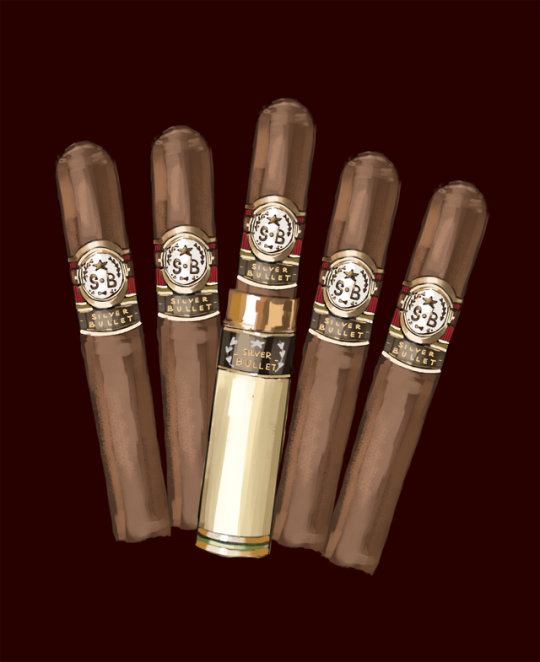

Diego Brando "Silver Bullet" Cigars
for @xzelzine
"The Gentleman Approach"
1K notes
·
View notes
Photo
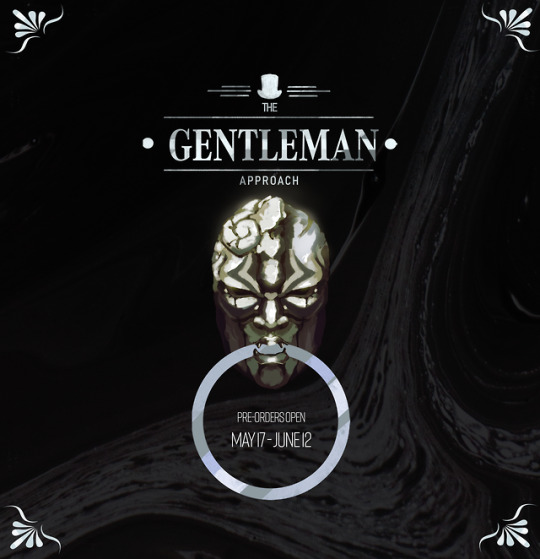
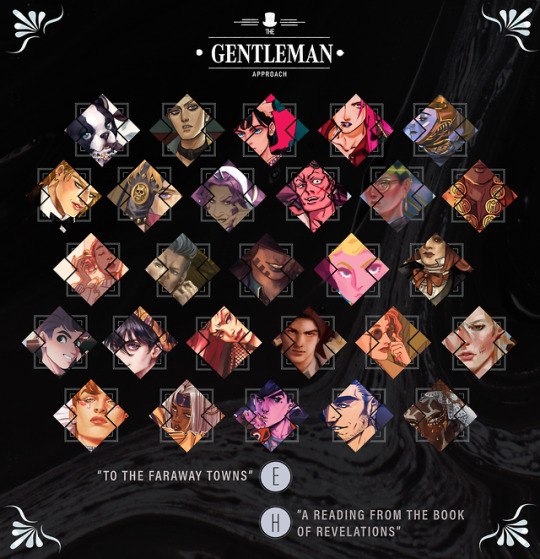

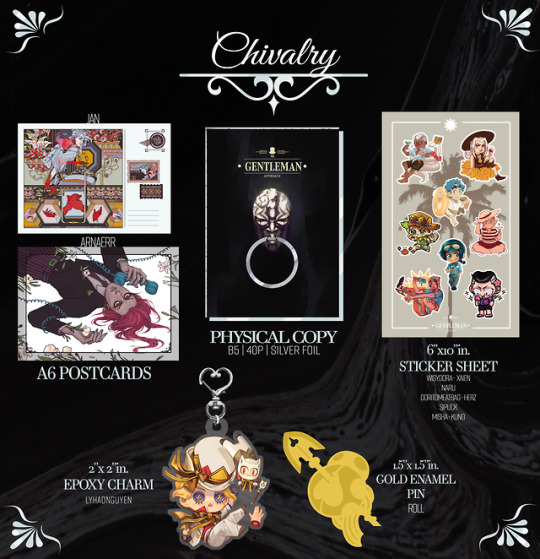
The Gentleman Approach
A Jojo’s Bizarre Adventure Menswear & Lifestyle Catalogue!
Pre-orders are now open! May 17 - June 12!
https://xzelzine.bigcartel.com/
[ Reblogs are appreciated! ]
1K notes
·
View notes
Photo

Dropping by to let you guys know I was honored to participate in a Zine project for the first time! 😍
Here is the Preview of my Caesar piece for @xzelzine
🎩 The Gentleman Approach Zine 🎩
Pre-orders are open from May17 to June12! Please check it out!
🌟 https://xzelzine.bigcartel.com/ 🌟
99 notes
·
View notes
Note
Hi...uh this is probably a dumb question but I only found your account recently and was bummed to hear I was late to The Gentleman's club issue. I understand sold out means sold out but I was just wondering, since you have digital copies is there any way those are still for sale? And are there more issues with male characters coming or is this the only one?
Hello!
We apologize for any delay in answering, but the good news is we do have some left over booklets of Gentlemen’s Club! For the higher quality prints, we will have limited stock ‘packed’ deals for a Men’s Club + Ladies Night purchase. We are also planning on having left over sales once Ladies’ Night copies have been sent out, and where we will be trying to sell the rest of the stock of both zines to add to the donations total for Ladies’ Night.
More details regarding how we will handle this ‘left over sale’ for Men’s Club will come as we approach the pre-order period for Ladies’ Night! Thank you for your question.
10 notes
·
View notes
Text
Good Omens - “Tricked and Treated” (Rated G)
Summary: Aziraphale and Adam bump into an intriguing man and his son while out Trick or Treating. Of course, it is Halloween, and nothing is quite what it seems ... (3415 words)
Notes: This is one of two stories I wrote for A Big Spooky Fan Zine. Be sure to check the rest of the collection for some amazing spooky works from other wonderful fandom creators :)
Read on AO3.
Knock-knock-knock-knock!
“Trick or Treat! Smell my feet! Give me somethin’ good to eat! If you don’t, I don’t care. I’VE GOT PURPLE UNDERWEAR!!”
The chorus of tinny voices dissolves into giggles as a multitude of pint-sized monsters, ghouls, and superheroes wait for the door to open. If it doesn’t … they won’t do anything. Not a one of them is older than nine, and their parents are standing a few feet behind them. But the song is tradition, even if they do tweak the lyrics a bit every year.
Last year, the preferred modifier for underwear had been ‘dirty’, and even though that isn’t age-inappropriate, per se, the parents are thrilled the quorum decided upon a color this year instead.
The group falls silent when they hear heavy footsteps approach from the opposite side. The brass knob turns, and the door pulls in. The children know what to expect, but still, they take a tentative step backward. It’s an old house, but a familiar one; that always has carved pumpkins on the patio at Halloween and handmade wreaths on the door at Christmas. A house that generations of children have run up to on October 31sts past and knocked on its door. Those children grew up and bring their children here to visit the same bubbly lady who never seems to age, always has a smile on her face, and a tray of homemade caramel apples wrapped in wax paper at the ready.
The door creaks open.
The children gasp in anticipation.
Then, she is revealed: a red-haired woman in a flowing, floral kaftan beneath a cozy pink peacoat steps out with her gentleman behind her, dressed in olive drab and menacingly pointing, of all things, his right index finger, as if he thinks it will protect him from the beasties gracing their porch. The woman looks at the crowd of masks and made-up faces surrounding her and gasps in mock fear.
“My goodness!” she says, putting a hand to her mouth. “Look at all these frightful goblins and ghouls at my door tonight! I don’t suppose any of you like caramel apples, hmm?”
“I do! I do!” Hands shoot up, eager to be seen. The woman smiles.
“Mr. Shadwell! Put your finger away and bring me that tray!” she scolds, grabbing up apples on their sturdy wooden sticks when they come her way and handing them out one at a time, receiving a grateful and excited, “Thank you!” with each one.
“I do believe everyone’s parent is present,” she says with a glance towards the ring of adults manning her garden gate, “but if they’re not, you let them know that these apples came from Tracy Shadwell’s own kitchen, so they’re safe to eat.”
“Yes, ma’am!” the kids answer obediently. Most everyone in the neighborhood knows Mrs. Shadwell and her famous caramel apples. For those who don’t, she ties a pink tag at the base of each stick with her name and telephone number embossed on it in gold, should anyone want to verify.
And while she hands out her wares, she looks over each child and comments on their costume – the hand-crafted along with the store-bought – with nothing but the highest praise. As the crowd thins, two boys approach, patiently awaiting their turns. Mrs. Shadwell spots the first of the boys and hands him two caramel apples. She knows him - and his chaperone - very well.
“Why, Adam Young!” she coos at the boy dressed in white satin brocade. “What a stunning costume! Another one from your grandfather’s collection?”
“Yes, ma’am,” the boy replies proudly. “French Revolution era. I’m a political prisoner, about to get my head chopped off!” He drags a finger across his throat in a slicing motion, tilting his head to one side and sticking out his tongue for greater emphasis. His eyes pop as he remembers the best part. “Look! Here’s my head!” He fishes around in his candy bag and pulls out a childishly executed but morbid prop - a bleeding papier-mache head on a stick. It vaguely resembles Adam, having the same hair color and skin tone, but drenched in fake blood and with X’s over the eyes. “I wanted to slather blood all over my neck, but my grandfather said no.”
“I can understand why!” Tracy chuckles. “That costume must be expensive! It looks quite handsome on you.”
“Thank you, Mrs. Shadwell,” Adam says with a dignified bow.
“You’re very welcome.” Her gaze lands on the boy standing beside him. “And you! Another scary vampire!” The corners of her mouth tug down as she struggles for a name. “I can’t seem to recall your name, dear. Would you be so kind as to help an old lady out?”
“I’m Warlock,” the boy says, speaking with a pronounced lisp and spitting his consonants, courtesy of the plastic fangs crowding his mouth.
“Here you go, Warlock.” Mrs. Shadwell hands him two apples as well. It wouldn’t be right to give him only one since he’s seen Adam get two. Besides, thanks to her husband’s help, she has a whole army of apples sitting in her kitchen, waiting to be doled out. “Thank you for stopping by so I could see your costume. Give your parents my fondest regards.”
“Yesh, ma’am,” the boy slurs, trying his best not to spit again. “Thank you, ma’am.”
The boys wave politely as Mrs. Shadwell closes her door. They turn together, stepping down from the porch, eyeing one another’s costume as if the two of them are catwalk rivals.
“That belongsth to your grandpa?” Warlock asks, looking Adam’s shimmery outfit up and down.
“Yup.” Adam holds his head high and gives the boy a spin so he can view it from all sides. “Your costume is cool, too. Did your parents buy it? Or did someone make it for you?”
“It’sth vintage,” Warlock explains, tongue tripping over his teeth. “It wasth my father’s when he wasth a boy.” He holds the ends of his cape out wide, flapping the wings it creates.
“Awesome!”
“That’s right, Warlock,” a tall man says, receiving both children when they reach the wooden gate. “It belonged to your ancient, elderly father.”
The man standing beside him chuckles, reaching a hand out to Adam as the boy walks through.
“Well, despite its interminable old age, it really is a smashing costume, Mr….”
“Crowley,” Warlock’s father supplies, extending a hand in greeting. “Anthony J. Crowley.”
“Aziraphale,” Adam’s grandfather answers, taking Crowley’s hand and shaking it. “Aziraphale Fell. This is my grandson, Adam.”
Crowley nods at the boy who is less concerned with the subject of adults’ names as he is with comparing his haul with that of the boy beside him.
“I believe we’ve lost them!” Aziraphale laughs as Adam and Warlock dive into their sacks.
“Bound to happen,” Crowley concurs. “We’re nowhere near as entertaining as chocolate. At least, I’m not. Not to be rude or anything but aren’t you a little young to be a grandfather?”
Aziraphale grins hard enough to make his cheeks ache. “That’s very kind of you to say, but I am much older than you might think.” He narrows his eyes at the man tousling his son’s black hair - suspicious considering his own hair is red. Flame red. Of course, that could come from a bottle. Not that Aziraphale is judging. It looks rather fetching on him. “Forgive my saying so, but I don’t think I’ve seen you or your son around here before.”
“Is that so strange?” Crowley asks, his grin growing tight, but not terribly.
It seems Aziraphale may not be the first person of the evening to mention it.
“No, not really. But we’re a tiny hamlet. Everyone here knows everyone else.” Aziraphale leans in a companionable inch. “All their secrets, too.”
“Ah, well, we’re not from around here,” Crowley admits with a sheepish grin.
“Gotcha.” Aziraphale winks. “It’s no secret that we’re one of the few neighborhoods around that gives out full-sized candy bars by the handful and real popcorn balls – not that stale, store-bought crud.” Crowley’s lips quirk, in shame it seems, and Aziraphale rushes to elaborate. “Not that we mind visitors!” he says, waving his hands as if to wipe away any doubt. “As long as the children have a pleasant time, that’s all we care about. It’s nice to see some new blood around here.”
Crowley stares at Aziraphale, his face blank for a second. His lower lip quivers. He sputters, then he laughs out loud (harder than necessary, Aziraphale feels).
“What?” Aziraphale asks self-consciously.
“Nothing,” Crowley says, reining in his laughter with a snort that Aziraphale can’t help but find adorable. “It’s just been a while since I’ve heard that term. But to be honest, we’re here strictly to socialize. We don’t eat candy.”
Adam, totally engrossed in his conversation with Warlock, catches that last part. His head snaps up, jaw dropping to the ground, utter disbelief written on his face.
“Don’t eat it?” he moans with regret on his new friend’s behalf. “Why not?”
“I’m on a special diet,” Warlock says, looking down at his pregnant bag of sweets.
“A special diet?” Aziraphale looks from Warlock to his father.
“I adopted Warlock from a hospital overseas,” Crowley explains, distracted momentarily by a new wave of Trick-or-Treaters headed their way. “He has a rare blood-borne illness that they were ill-equipped to handle.”
“But … is he okay now?” Aziraphale gazes at the boy’s face, particularly his large, sleepy eyes, dark circles underneath made all the more prominent by his pale skin. Crowley watches the way Aziraphale looks at his son, examining him with an expression of genuine concern, and smiles.
“There is no cure, but we’re managing it the best we can.” Crowley puts a hand on Warlock’s shoulder and gives it a squeeze. “It helps when you don’t have to worry about trivial things like money. Heartbreaking for those parents in dire straits who don’t have an excess of disposable income. A lot of tough choices to be made when you find yourself in that position.”
“Aren’t you the lucky one?” Aziraphale teases, knocking Crowley playfully on the shoulder.
“It’s old money,” Crowley replies, that sheepish smile from before making a comeback. “I like putting it to good use.”
Aziraphale looks up when Crowley does and meets his eyes – boundless amber eyes that catch the surrounding street lights and flickering Jack-O-Lantern candles in a mesmerizing way, as if with a single blink he could read Aziraphale’s mind.
Or hypnotize him into doing his bidding.
They don’t look human. Snake-ish, more like - slit pupils and all. They can’t be real. They have to be contact lenses. Fake or not, there’s something about them that makes Aziraphale shiver. Crowley notices, grinning devilishly. Aziraphale laughs.
He’s letting the magic of the evening get to him.
Or the magic of this charming man.
From the corner of his eye, Aziraphale catches Adam yawn. He fishes his watch out of his pocket and checks the time.
“Oh my goodness!” he exclaims. “Look at that! When did it get so late?”
“We’re not going home now, are we?” Adam asks, whining the way tired children do while fighting back a yawn.
“I’m afraid so, my dear,” Aziraphale says. “You’re just about dead on your feet, and I can’t carry you all the way back to the house. Besides, I promised your mother and father I’d have you tucked in before they got home.
“We’d better be heading out as well,” Crowley says, wrapping an arm around his son’s thin shoulders and holding him close.
“Do we have to?” Warlock asks, sulking into his father’s embrace.
“I’m afraid so.”
“All right.” Warlock turns to Adam, who yawns again, shaking his head to dislodge the exhaustion from his brain. “It was nice meeting you, Adam.”
“It was nice meeting you, too,” Adam says.
“Do you guys …?” Aziraphale starts, not eager to see this captivating man disappear so quickly. “I know you said you aren’t from around here, but …”
“We’re in Mayfair,” Crowley says, anticipating Aziraphale’s question. “About two hours give or take, as the bat flies.”
“Ah.” Aziraphale casts his eyes down dejectedly. “That’s quite a distance to travel for conversation and candy you can’t eat.”
“We’re also visiting family. Family that we’ve been looking into visiting more often, maybe even moving closer to, so who knows? You could be seeing us around?”
Aziraphale nods because if that question implies what Aziraphale hopes it does, the answer is definitely yes.
“Who knows?” he echoes, hoping Crowley catches on to the fact that he’s flirting. It’s been a while, and he was never very good at it to begin with. “We might end up neighbors.”
“Maybe,” Crowley says, the word a vague promise but a promise nonetheless. It leaves Aziraphale with the feeling that if those plans to move fall through, he may still see Crowley again. “I could take you out for a bite?”
Aziraphale smiles, cheeks flushing red and not from the chill in the autumn air.
“I’ll take you up on that.” Aziraphale reaches into his pocket and pulls out his business card. “You can reach me at this number. I have a bookshop in Soho. I’m there most of the time … even if the sign on the door says closed.”
Crowley takes it, slipping it from between Aziraphale’s fingers and sliding it into his inside breast pocket. “Clever of you, really. Who wants to be bothered by a bunch of busybody customers anyhow?” He smooths down the front of his jacket, patting the pocket keeping Aziraphale’s business card safe.
That subtle touch of his palm to the spot makes Aziraphale tingly inside.
“Here …” Warlock, watching the exchange between the two men, holds out his bag of candy to Adam “… I want you to have this.”
Adam’s eyes grow big as saucers, his face lighting up at the offer of a sack of sweets as big as his own. “No way! Are you sure?”
“Yeah,” Warlock says with a sad, one-shoulder shrug. “I wasth gonna hafta throw it out anyway.”
Adam looks up at Aziraphale, eyes pleading. “Can I?”
“I don’t see why not. It would be rude to turn down such a generous gift.”
“Yes, it would,” Adam agrees, reaching for the bag and taking it reverently. “Thank you, Warlock.”
“Don’t make yourself sick eating all that candy in one night,” Crowley says.
“Oh, I won’t!” Adam assures him. “I’m going to share it with my three best friends! Hey! If you come back, I can introduce you!”
“You would do that?” Warlock asks.
“Of course! There’s always room for one more in our group.”
“Now, you see, you must come back,” Aziraphale says when he’d meant to say ‘We’ll see, boys. We’ll see.’ He doesn’t want to appear pushy. He doesn’t regret it an inch, though, when he notices the new look in Crowley’s eyes - the one that says he’s prepared to move heaven and earth to make that happen.
If it’s because of the promise of new friends for Warlock or to see him again, however, remains to be seen.
“I guess we will,” Crowley responds.
“Have a safe evening, Mr. Crowley. Warlock.” Aziraphale raises a hand and waves good-bye, backing away, pulling Adam along with him.
“And you as well, Mr. Fell. Adam.” Crowley waves back, turning down the street with Warlock in tow.
Crowley and Warlock weave through several pods of children racing up to houses and knocking noisily on doors. They walk against the flow of revelers, ending in a dark street with no lamps lit, no decorations on the porches, no Trick-or-Treaters anywhere to be seen.
“Did you have a good time?” Crowley asks.
“Yesh.” Warlock reaches up and spits out the false teeth that had been covering his fangs, glad to be rid of them at long last. “That was a blast! Adam and his granddad are really nice. Don’t you think they’re really nice?” Warlock asks, vibrating with the enthusiasm of … well, an eight-year-old on Halloween.
“Yes,” Crowley agrees, turning one last time, using his supernatural vision to find the man and his grandson walking down the street. Crowley doesn’t believe for a minute that Aziraphale is that boy’s grandfather, but he couldn’t get a read on him … as in he couldn’t read Aziraphale’s mind like he can with other humans. Adam’s neither, which makes the two of them that much more enticing.
Aziraphale looks over his shoulder and bites his lip as if he knows he’s being watched. Crowley eyes the dent his teeth make in his skin, lingering on it and licking his lips. If his heart were still beating in his chest, it would be racing out of control by now. “They were great. With any luck, we’ll be seeing them again.” Crowley puts a hand over the pocket with the business card hidden inside and smiles. “So,” he says, clapping his hands in front of him, “are you ready to give it another try?”
“Yes.” Warlock sounds confident, but he looks ready to puke. “It’s just … I’m not as good at it as you are.”
“It takes practice,” Crowley says, and with a snap of his fingers (which is entirely unnecessary - he does it solely for dramatic effect), he changes - shrinks down, sprouts wings, keeping only his serpentine eyes and a tuft of his red hair.
Crowley transforms effortlessly.
Warlock manages the feat with a little less finesse and a frantic snapping of fingers, but even though he’s only done it about a dozen times, he makes a handsome young bat. Father and son circle the neighborhood once to stretch their leathery wings and then rise high into the air. From this height, they can see everything, the whole of London stretched out beneath them. Crowley manages to spot Aziraphale and Adam one last time, then heads towards the ocean, disappearing into the night.
***
“Here we are, Adam,” Aziraphale says, opening the door to the Young house and ushering his charge inside. “If you hurry, get yourself washed up and into your nighttime clothes, you can sort your candy until your parents get home.”
“Can I have a piece or two?” Adam asks, gripping hard to the handles of his bags. “Or seven?”
“Three,” Aziraphale counters.
“Five?” Adam negotiates hopefully.
Aziraphale bobs his head back and forth, taking his time on purpose.
“Four,” he decides. “Final offer.”
“Deal!” Adam takes it. No need to tempt fate any further. He races off towards the staircase, burdened by roughly sixteen pounds of sugar weighing down his arms, but stops at the bottom step. He looks at Aziraphale thoughtfully for a moment before he speaks.
“Aziraphale?”
“Yes, Adam?”
“Warlock and his dad … they’re vampires, aren’t they?”
Aziraphale smiles to himself and nods. Crowley and Warlock are as much humans as he and Adam. Aziraphale is an angel, tasked by the Almighty Herself to care for the Antichrist, ensure he never comes into his power and brings about the end of the world. He’s been on the lookout for demons since Adam was born.
Which should make striking up a conversation with a vampire inadvisable.
But Aziraphale doesn’t believe Crowley meant to do them any harm. He didn’t come across as the dangerous sort of evil. For one thing, he didn’t seem to recognize Aziraphale and Adam for what they are at all. And a vampire adopting a son? Aziraphale has never heard of such a thing. Vampires tend to be opportunists. What could Crowley possibly have to gain by doing that? Still, Aziraphale can’t let his guard down, not for a minute. He isn’t sure what Crowley was trying to pull, but he hopes he gets the chance to find out. “Yes, I believe they are.”
“Cool,” Adam says with an awe-consumed grin. “I hope we see them again.”
Aziraphale pictures Crowley in his mind: his fair skin, his steep nose, his red hair, and his snake-ish eyes. Aziraphale has seen his share of demons, but they’ve all been wretched. Not Crowley. Crowley takes pride in his appearance, that’s for sure. It reminds Aziraphale of the sad state of his wings. He must groom them as soon as time permits.
“So do I, Adam,” he says, planning for later tonight when young Adam is asleep. Wing grooming is a messy business, one he’d prefer to do in private. “So do I.”
#good omens#good omens fanfiction#ineffable husbands#ineffable lovers#crowley x aziraphale#aziraphale x crowley#aziraphale#crowley
32 notes
·
View notes
Photo
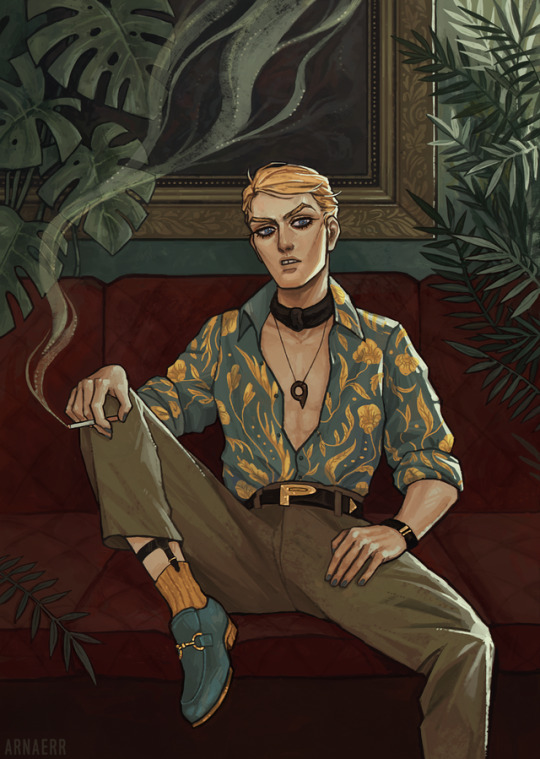

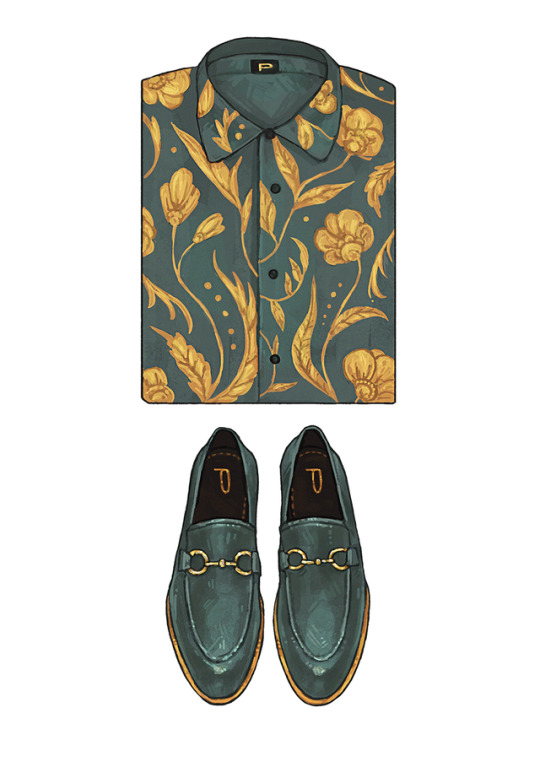
my pieces for @xzelzine The Gentleman Approach zine 🚬🥓🌿
2K notes
·
View notes
Photo



My previews for @xzelzine 's The Gentleman Approach zine!! I'm very excited and honoured to be part of this project among so many wonderful artists and authors ;w;
I got to draw two pieces of two of my favourite characters!! Also, I made a Mikitaka sticker! Prost!
Pre-orders are open until June 12, you can get the zine at https://xzelzine.bigcartel.com/ !!
1K notes
·
View notes
Photo
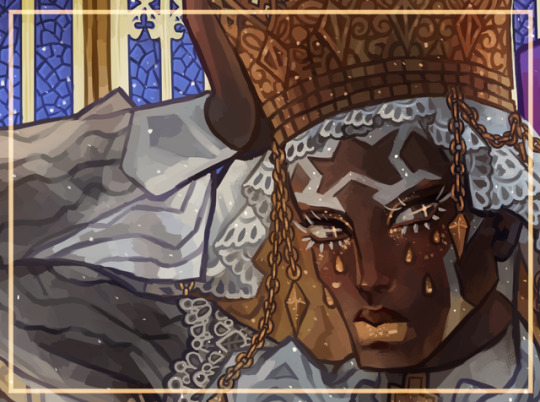
A preview of my piece for @xzelzine‘s “The Gentleman Approach" zine! Preorders just opened and the work in it is fantastic, please consider checking it out!
https://xzelzine.bigcartel.com/
78 notes
·
View notes
Photo
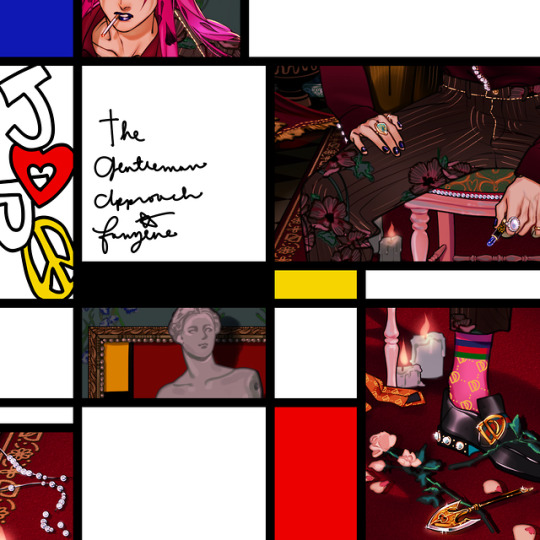
💋 THE GENTLEMAN APPROACH💄preview ft. Diavolo
A JOJO Menswear & Lifestyle Catalogue Zine
😈 Preorders Open: May 17 ~ June 12
🌹 https://xzelzine.bigcartel.com/ 🌹 @xzelzine
#jjba#jojo's bizarre adventure#vento aureo#diavolo#didnt tumblr nerf the vento aureo tag lmao#golden wind#is that better? idk#alulu art#alu in projects#anime#manga#illustration#artists on tumblr#fashion#this is high aes everyones preview were amazing!
20 notes
·
View notes
Photo
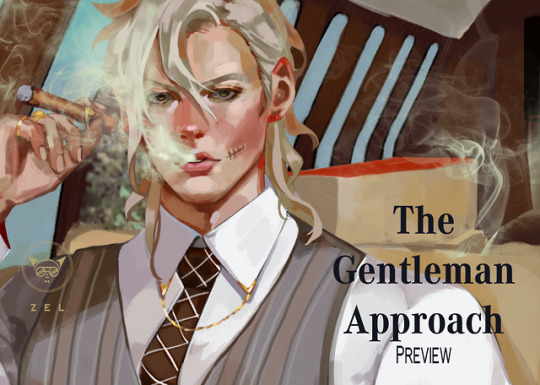
Diego Brando - Preview
The Gentleman Approach Zine!
Pre-orders now open @ (link: https://xzelzine.bigcartel.com/)
From May17-June12!
436 notes
·
View notes
Photo
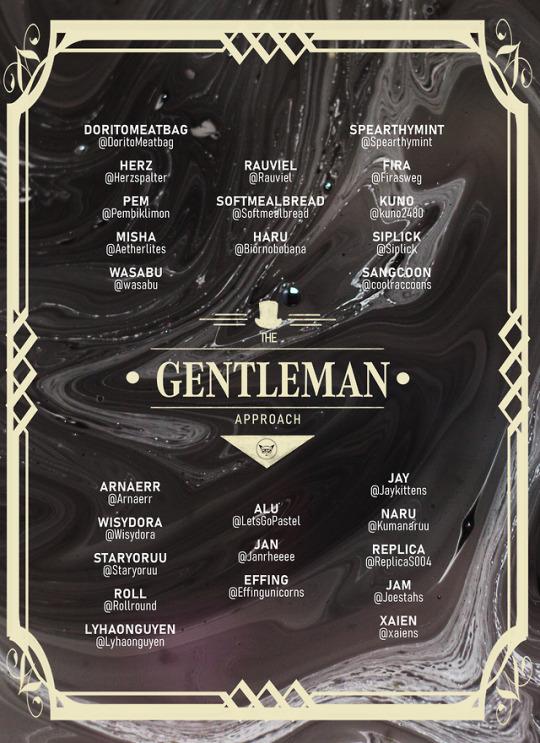
The Gentleman Approach Zine
♚ A Jojo’s Bizarre Adventure Menswear/Lifestyle catalogue! ♚
Artist Line-Up
@DoritoMeatbag @Herzspalter @aetherlites @wasabu @Rauviel @softmealbread @spearthymint @firasweg @kuno2480 @Siplick @coolraccoons @biornobobana @arnaerr @Wisydora @rollround @lyhaonguyen @LetsGoPastel @janrheeee @effingunicorns @jaykittens @kumanaruu @Replica004 @joestahs @xaiens @Staryoruu
17 notes
·
View notes
Text
5th November 2019 Student-led seminar 3
Text: Twemlow, A. (2006) No muscles, no tattoos. Available at: http://www.eyemagazine.com/feature/article/no-muscles-no-tattoos (Accessed on: 1st November 2019)
Table of content:
Introduction
Main part:
Reality proximity against intimidation
A closer view on BUTT Magazine
Heritage?
Conclusion
Notes:
Books and articles
Pictures
About the author: Dr. Alice Twemlow earned a Ph.D. from the History of Design program run as a joint venture by the Royal College of Art and the Victoria & Albert Museum, London. Her research addresses design’s complex interrelations with time and the environment and manifests in writing, exhibitions, conferences, and education. She is Research Professor at the Royal Academy of Art, The Hague (KABK) where she leads the “Design and the Deep Future” readership, and an Associate Professor at Leiden University, in the Academy for Creative and Performing Arts, where she supervises design-related PhDArts candidates(1).
About the Magazines:
BUTT Magazine was founded in 2001 by Gert Jonkers and Job van Bennenkom in Amsterdam. It was a quarterly magazine for gay men, written in English and printed until 2011.
In 2005, The Guardian named it as one of its top twenty magazines(2).
Fantastic Man, founded in 2005 by Gert Jonkers and Job van Bennenkom, is a men's fashion magazine printed semi-annually. It focusses on men's fashion in their 30s with interviews of male celebrities and intellectuals with a big variety of backgrounds.
In 2008, the magazine was praised for its art direction, winning it the British D&AD award for Best Magazine & Newspaper Design(3).
Aaron Britt, in a review of men's fashion magazines for the San Francisco Chronicle, lauded:
'It comes out only twice a year, allowing the sticker shock to wear off between purchases, but you'll never throw away an issue. Fashion-forward, clever, deeply engaged with the fashion world without the half-baked political exposes Esquire insists on running, (...) is better designed, better photographed and rafts more stylish than the competition. If you buy only one men's fashion magazine, it should be this one.’(4)
Introduction
We are surrounded by advertisements of a broad variety, including fashion and beauty, telling us of contemporary aesthetics of what to wear and how to look, what kind of hair-cuts and shoes are ‘in’ this Autumn and what to look for in Spring 2020, what kind of beauty routine and diet is good for you to look like your favourite celebrity and where to buy your favourite celebrities dress look-a-likes.
In the fashion industry, models are presented as perfectly shaped: superficial, anorexic young girls and very muscular men with not a single hair on their body. In Magazines, they are presented in eclectic pictures and photo collages, with a focused layout and printed on glossy paper.
Flipping through UK’s most famous magazines like Vogue, Glamour or men focused magazines like GQ, or Ape-to-Gentleman, their aesthetics are strongly stylised and typified. I wonder how you don’t feel a tiny bit intimidated - even as an adult. How must this appear to younger people or teens trying to figure out their changing roles from child to adult and searching for role-models? How must it be for teens that don’t feel like fitting into the black and white man-woman framework?
There must be alternative aesthetics, alternatives for alternative people. How do magazines which focus on such audiences present themselves? Clean-glossy, like their mainstream counterparts? In her profile of Jop van Bennekom and some of his magazines, Twemlow presents some very different examples.
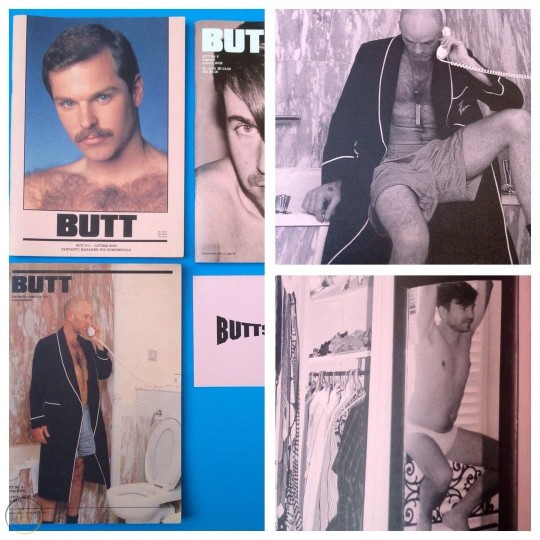
Above: My screenshot of BUTT Magazines 8-11, WorthPoint, (2019)
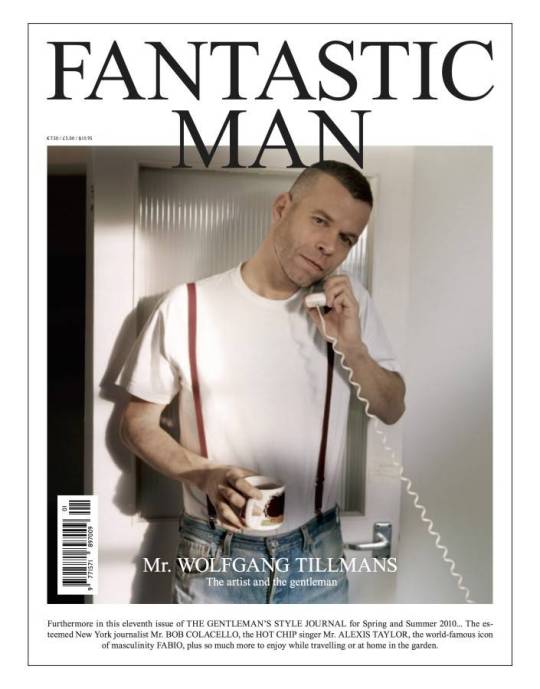
Above: My screenshot of Fantastic Man Spring/Summer 2010, #11 (2019)
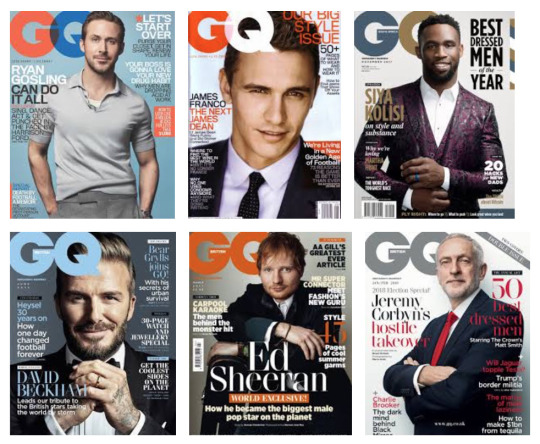
Above: My screenshot of GQ Magazine Collage, Freeport Press, (2019)
Reality proximity against intimidation
Nowadays, Jop van Bennekom and Gert Jonkers are well known for their magazines for gay people. When being asked by James Anderson from i-D Vice online about his motivations to create BUTT Magazine, Gert Jonkers responded that he wanted
‘something for the contemporary homo. A journal for and by gay men. A meeting ground, figuratively speaking. We wanted the magazine to feel like meeting an amazing man on the train or in a bar and have a great interesting conversation with him.‘(5)
Their focus was as it seems to create something relatable, something close instead of intimidatingly perfect like fashion Magazines in the mainstream are known for. Jonkers also stresses this part: people shouldn’t be living objects for fashion or beauty ads. He reflects on the rhetorical question whether the most stylish charm isn’t actually natural charm. He underlines his previous response about the motivation as BUTT should mirror real, ‘normal un-self-aware’ men.
This strategy seems to work, as the eye-magazine shows in an interview with Andrew Sloath:
‘It has given voice and visual presence to those of us who are trying to figure out our own worlds.’(6)
Bennekom sums this up perfectly:
‘I wish Butt had been around when I was 22 and insecure (…). Other gay magazines have cut-and-paste, retouched bodies unlike any you’ve ever seen in real life and certainly not like mine.’(7)
Young Bennekom, as a graphic design student, found his inspiration in the work of fashion design students at his university in the Netherlands around the 90s. With newly founded anti-fashion magazine Purple in 1992 and a shifting fashion photography rising, he started to interview his friends and published this in the style of a Q&A.
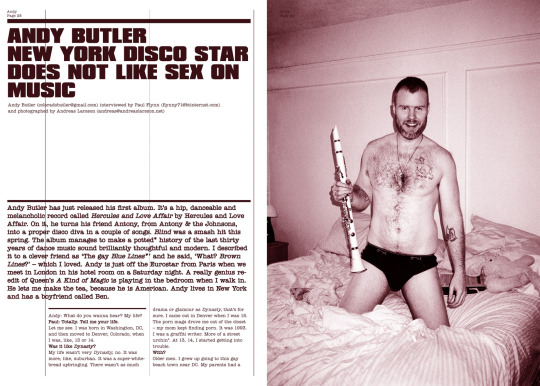
Above: My screenshot of BUTT Magazine, Summer 2008, #23, (2019)
A closer view on BUTT Magazine
For the BUTT Magazine, this kind of interdisciplinary mix of fashion and art, the eccentric way to display people around him in their natural clothing and living style, must have been a revelation to his like-minded audience. Real people with normal body types, with hair and used looking clothing, with wrinkles and real tousled hair, set in real surroundings with imperfect but familiar settings. They could be a neighbour, a person on the street, at the grocery shop, in the pub. Their stories and themes are as casual and boring as anyone’s, although it starred gay artists and celebrities as well. In this mix of content, one might find confidence about one’s outing, clothes, thoughts, about their body shape, their hair zones, and their sexuality. It seems like this kind of exhibition of normality can liberate people. And it did. People started to imitate the Q&A style interviews and photos and sent in their own content, together with stories, letters, and so on.
Maybe it was also due to its clean layout that readers could imagine to be published and to copy this style. A design that feels like ‘nothing’ can be very complex, dense and tightly controlled in its design process, as Twemlow summarises(8).
This passion and the approachable magazine team created a more significant collaboration and value than the cheapish Zine styled papers would suggest:
‘They’re something you don’t buy and read and throw away,” says Bronson. “You end up keeping them in plastic envelopes, even though they’re kind of cheap.’(9)
Following the trend with an online presence, BUTT Magazine became an even more interactive meeting platform for its readers. Looking at the page, it, however, looks like it has not been very actively moderated in recent times.
Heritage?
While researching BUTT Magazine and Fantastic Man I was reminded of other magazines that are known to me, like the ZEIT Magazin MANN. Their visual language and layout are similar.
Another example is a rather new niche magazine from the Netherlands, called MacGuffin Magazine, related to Hitchcock’s definition in film. While I could not find a proof in time whether those examples indeed found inspiration from van Bennekom and Jonkers, the visual connection is quite clear. To be decisive on this assumption this would need additional research.
ZEIT Magazin MANN was named magazine of the week by MagCulture:
‘MANN is a standalone, bi-annual that costs €8.50 and aims to fill a gap in the German market which notably lacks obvious alternatives to the big titles like GQ and Esquire.
We’ve selected it as our magazine of the week because, quite simply, this is something that would never be produced by a newspaper in the UK.’(10)
During my research I saw MacGuffin Magazine was also named magazine of the week by MagCulture:
‘The magazine’s strangely dreamy yet academic rigor is matched with soft yet crisp design (...)’(11)
My point here is that niche and eccentric looks in magazines don’t seem like a high-selling product. I believe there is an interested audience on a broad variety of topics. While ZEIT Magazin MANN seemingly found a well-balanced position due to missing supply, it could be difficult for magazines of similar niche focus. ZEIT Magazin MANN is part of a bigger company, DIE ZEIT, hence they can rather easily advertise new magazines. What about new magazines by younger people like van Bennekom and Jonkers without big starting capital? Could new niche magazines still survive in our fast-paced culture, that mainly lives online?
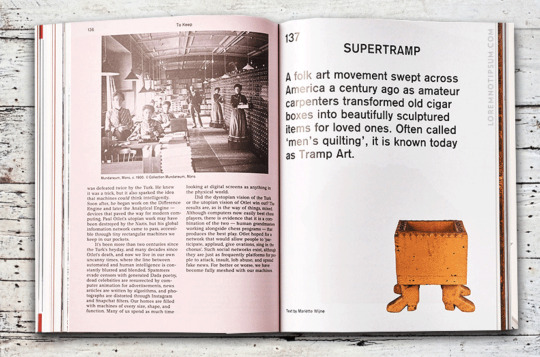
Above: My screenshot of MacGuffin Magazine Issue N° 5 14th December 2017, (2019)

Above: My screenshot of ZEIT Magazin MANN 1/2018, (2019)
Conclusion:
The printed version of BUTT Magazine ended in 2011, after 10 years. A new generation and with it a modernism shift in aesthetic and culture came with a postmodern approach. A rather hipster or emotionally one with a different approach to modern gay life. Also, the style of communication and connectivity switched from MySpace, Facebook, and websites to more fast-paced means like Twitter, Snapchat, and Tinder. At the same time, porn saw changes due to Social Media.
The question here would be if a contemporary re-make still could work or if Social Media got it all covered, no need for a printed version that could be kept for years?
As Nicholas Mirzoeff portrays it:
‘(...) ‘the postmodern is the crisis caused by modernism and modern culture confronting the failure of its own strategy of visualising. In other words, it is the visual crisis of culture that creates postmodernity, not its textuality. While print culture is certainly not going to disappear, the fascination with the visual and its effects that was a key feature of modernism has engendered a postmodern culture that is at its most postmodern when it is visual.’(12).
Notes:
Books and articles
Twemlow, A. (no date) About. Available at: http://alicetwemlow.com/about/ (Accessed on: 1st November 2019).
Armstrong, S., Dugdale, J., Gibson, J., Gibson, O., Hepworth, G., McLean, G., Tod, A., Viner, K., Wells, M. (2005) 'Covered in glory’, The Guardian, 12th December. Available at: https://www.theguardian.com/media/2005/dec/12/mondaymediasection.pressandpublishing?gusrc=rss&feed=global (Accessed on: 1st November 2019).
D&AD (2008) Available at: https://www.dandad.org/awards/professional/2008/magazine-newspaper-design/16666/fantastic-man (Accessed on: 1st November 2019).
Britt, A. (2009) ‘A quick guide to men's fashion media’, SFGATE, 15th February. Available at: https://www.sfgate.com/living/article/A-quick-guide-to-men-s-fashion-media-3171839.php?forceWeb=1 (Accessed on: 1st November 2019).
Anderson, J. (2014) ‘Forever butt: discussing the revolutionary gay magazine with founder gert jonkers’, i-D Vice, 26th November. Available at: https://i-d.vice.com/en_uk/article/kz8bam/talking-forever-butt-magazine-with-founder-gert-jonkers (Accessed on: 1st November 2019).
Twemlow, A. (2006) No muscles, no tattoos. Available at: http://www.eyemagazine.com/feature/article/no-muscles-no-tattoos (Accessed on: 1st November 2019).
ibid.
ibid.
Haskell, D. (2008) ‘Very Graphic Design’, New York Magazine. 27th December. Available at: http://nymag.com/arts/art/features/53148/ (Accessed on: 1st November 2019).
Morley, M. (2016) ‘Magazine of the week: ZEIT Magazin MANN, #1’, MagCulture. 5th October. https://magculture.com/zeitmagazin-mann-1/ (Accessed on: 1st November 2019).
Morley, M. (2015) ‘Magazine of the week: MacGuffin #1’, MagCulture. 17th June. https://magculture.com/zeitmagazin-mann-1/ (Accessed on: 1st November 2019).
Mirzoeff, Nicholas (1998, p. 21) The visual culture reader, London: Routledge.
Pictures
WorthPoint, (2019), [Screenshot]. Available at: https://www.worthpoint.com/worthopedia/butt-magazine-lot-issues-11-michael-1725891166 (Accessed on: 31st October 2019).
Magpile, (2019), [Screenshot]. Available at: https://magpile.com/fantastic-man/spring-10/(Accessed on: 28 October 2019).
Freeport Press, (2018), [Screenshot]. Available at: http://freeportpress.com/gq-stares-down-a-multi-channel-revenue-stream (Accessed on: 31st October 2019).
Larson, A., (2008), [Screenshot]. Available at: http://www.andreaslarsson.net/portraits.html (Accessed on: 31st October 2019).
MacGuffin Magazine, (2017), [Screenshot]. Available at: https://www.macguffinmagazine.com/issues/macguffin-the-cabinet (Accessed on: 28 October 2019).
Zeitungen und Zeitschriften online, (2018), [Screenshot]. Available at: https://www.zzol.de/objekt/18099/20180001 (Accessed on: 28 October 2019).
0 notes